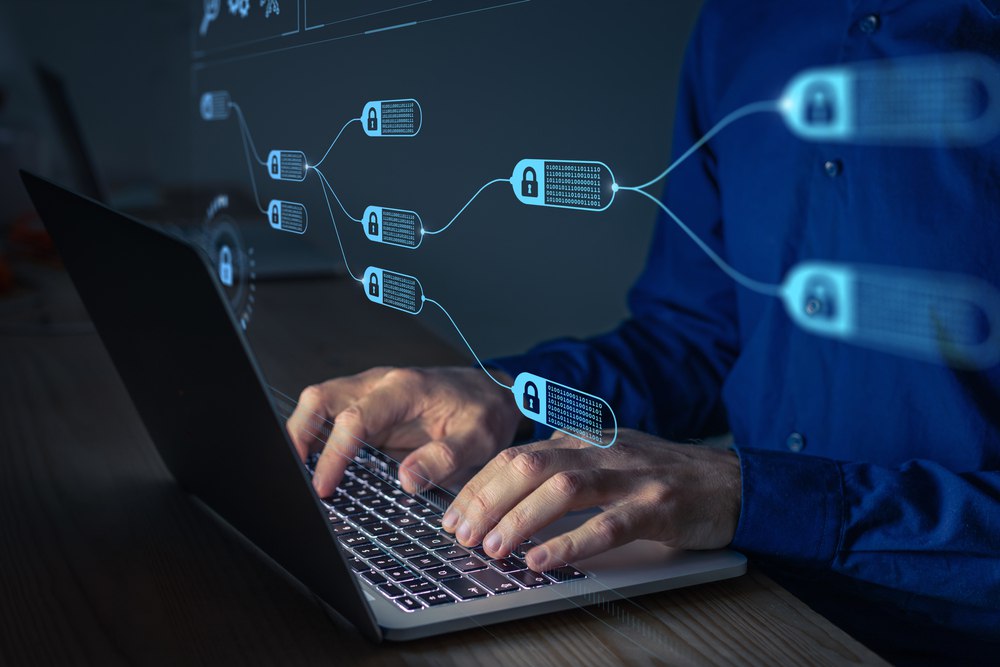The technology behind blockchain has completely altered the ways in which we process transactions and store data. The provision of an immutable ledger of all transactions that take place on the network is one of the most significant advantages offered by blockchain technology.
Because of this quality, blockchain technology is appealing to a variety of industries, including finance, healthcare, and logistics, among others. But, because of the surge in popularity of cryptocurrencies, blockchain technology has also become an appealing target for cybercriminals. As a direct consequence of this, blockchain forensics and asset tracking have developed into indispensable weapons in the battle against financial crimes.
What exactly is the field of blockchain forensics?
The technique of studying the data contained within a blockchain in order to recognize trends and track the flow of funds is known as blockchain forensics. It entails extracting data from a blockchain using a variety of different analytical techniques and then analyzing that data in order to find suspect transactions.
It is possible for blockchain forensics to assist law enforcement authorities and regulatory bodies in locating and apprehending cybercriminals who make use of cryptocurrencies for illegal purposes such as money laundering, drug trafficking, and financing terrorist activities.
How does the process of blockchain forensics work?
The process of evaluating the transactional data that is kept on a blockchain as part of blockchain forensics is intended to uncover trends and track the flow of funds. This method entails the following series of steps:
Extraction of Data: Blockchain forensics tools are used to extract data from blockchains, such as transactional data, network data, and metadata.
Analysis of the Data: After the data has been extracted, it is evaluated with a variety of analytical tools, including graph analysis, clustering, and machine learning algorithms, in order to recognize patterns and find abnormalities.
Pattern Identification: The suspect’s wallet addresses, transaction history, and network activity are included in the profile that is created using the detected patterns during the pattern identification process.
Attribution: The evidence that was gathered is used to identify the suspect and their role in the illegal behaviour that was taking place.
What does “asset tracking” mean when it comes to the blockchain?
Asset tracking on the blockchain refers to the process of utilizing blockchain technology to track the movement of assets, such as cryptocurrencies and other digital assets. This process may also refer to asset tracking. It creates an unchangeable record of all transactions and enables the tracing of assets from the point where they were created to the place where they are ultimately used. Tracking assets on a blockchain can assist companies in reducing their risk of being victims of fraud, theft, and other sorts of financial crimes.
How does the tracking of assets operate on the blockchain?
The use of “smart contracts,” which are contracts that automatically carry out their terms and in which the details of the agreement between the buyer and seller are inscribed directly into lines of code, is required for asset tracking on the blockchain. These smart contracts have the capability of producing a digital paper trail that traces the movement of the asset.
When an asset is moved from one user’s account to another on the blockchain, the corresponding smart contract is activated, and the transaction is then recorded on the ledger. This creates a record of the asset’s travel that cannot be altered and may be used to trace the asset’s ownership and determine where it is currently located.
Conclusion
In order to effectively combat illegal financial activity, methods such as blockchain forensics and asset monitoring are needed. The study of blockchain data is made possible by blockchain forensics, which enables the detection of potentially fraudulent transactions and the tracking of the movement of funds.
Tracking assets via blockchain technology creates an immutable record of asset movements, which gives businesses the ability to protect themselves from fraud and theft. As blockchain technology continues to advance, so too will the tools and strategies utilized for blockchain forensics and asset monitoring. This will contribute to the further improvement of the integrity and dependability of the financial system.
